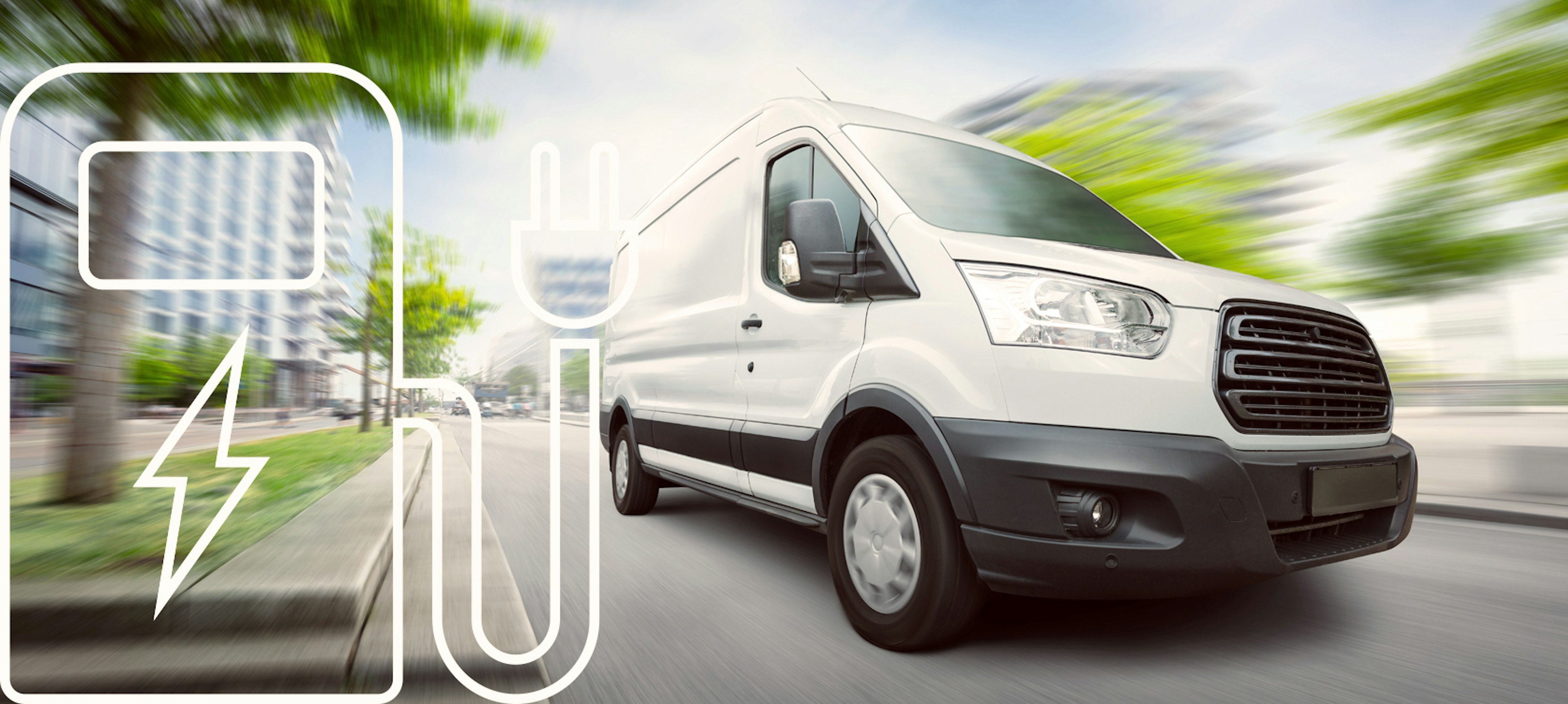While some fleet owners are charging ahead with electrification, the truth is that for many companies, going fully electric isn’t a viable option yet. Infrastructure constraints, vehicle size, and range requirements are just a few factors that can impact the decision to go electric. Fortunately, alternative fuels offer additional ways to lower your carbon footprint and operating costs. We spoke with some of our experts to explore the best applications for alternative fuels across common fleet vehicle classes.
The basics and benefits of alternative fuels.
As global concern around carbon emissions continues to dominate headlines, the transportation industry is under increasing pressure to reduce its carbon footprint and dependence on fossil fuels. “While electrification is a clear way your fleet can reduce emissions and follow through on ESG commitments, it is just one of several alternative fuels that fleet managers can consider,” says Ed Pierce, senior truck upfit consultant at Mike Albert. Some of the most common alternative fuels for class 1-8 vehicles include:
- Electricity: Electric vehicles (EVs) are powered by batteries and produce zero emissions. They are a good option for short-range applications, such as delivery trucks and city buses.
- Natural gas: Natural gas vehicles (NGVs) can use either compressed natural gas (CNG) or liquefied natural gas (LNG) as fuel. They offer a lower carbon footprint than gasoline or diesel vehicles.
- Propane: Sometimes referred to as liquefied petroleum gas, propane is compressed and stored as a liquid. It is a cleaner-burning fuel than gasoline or diesel, and it is also less expensive.
- Biodiesel: A renewable fuel created from vegetable oils or animal fats, biodiesel can be used in diesel engines with little (or sometimes no) modification.
- Hydrogen: Hydrogen fuel cell vehicles produce electricity from hydrogen and oxygen, with zero emissions. This technology has been widely discussed in recent years, but as it is still in the early stages of development, these types of vehicles are not widely available.
Each of these fuel types offers distinct benefits—and as the technology continues to develop and the cost of alternative fuels comes down, we can expect to see even more widespread adoption of these fuels in the future. Transitioning your fleet vehicles to models powered by alternative fuels can offer advantages like:
- Reduced emissions: Moving to alternative fuels can reduce your fleet’s greenhouse gas emissions and cut down on other pollutants that impact air quality.
- Lower operating costs: Most fleet owners cite fuel costs as a major line item for their operating budget, and many alternative fuels can be less expensive than gasoline or diesel.
- Improved performance: Certain alternative fuels can boost vehicle performance compared to gasoline or diesel, resulting in increased fuel efficiency and lower emissions.
Choosing the right alternative fuel for your fleet.
When considering alternative fuels for your fleet, you’ll first have to determine which vehicle classes make up your fleet and how they’re being used. “Things like vehicle size, weight, and range requirements, along with the refueling infrastructure, should be taken into account when shifting your fleet to alternative fuels,” says Pierce.
Class 1-2 vehicles:
- CLASS 1 GVWR: 0–6,000 pounds; model example/s: Chevrolet Colorado, GMC Canyon, Ford Ranger.
- CLASS 2 GVWR: 6,001–10,000 pounds; model example/s: Ford F-150, Ford F-250, RAM 1500,RAM 2500, Chevrolet Silverado/GMC Sierra 1500.
Commonly referred to as “light-duty,” classes 1 and 2 typically encompass vehicles such as passenger cars, SUVs, mini-vans, and pickup trucks. If your fleet is comprised mostly of cars or trucks in this vehicle class, going electric is likely your most economical choice:
- Battery electric vehicles (BEVs): A battery electric vehicle is well-suited for urban commuting and short-distance travel. Zero tailpipe emissions make it a good choice for the environment, and increasingly, extended ranges have made EVs ideal for reducing emissions in city centers. Plus, advances in charging infrastructure and battery technology have alleviated range anxiety, making BEVs a practical choice for short-range delivery trucks that operate in urban areas.
- Hybrid electric vehicles (HEVs): Powered by both a battery and gasoline, an HEV (also known as a conventional hybrid) uses a gasoline engine and regenerative braking to keep a smaller battery charged. You don’t have to plug in a conventional hybrid to operate the vehicle. Plug-in hybrid electric vehicles, or PHEVs, are powered in part by gasoline, but they also have larger batteries that need to be plugged in for power. The ability to charge batteries in advance helps PHEVs drive on pure electric power without burning any fuel. Hybrids excel in stop-and-go city traffic, where the electric mode can reduce fuel consumption and emissions.
Class 3-6 vehicles:
- CLASS 3 GVWR: 10,001–14,000 pounds; model example/s: Chevrolet Silverado/GMC Sierra 3500, Ford F-350, Ford F-450 (pickup only), Ram 3500.
- CLASS 4 GVWR: 14,001 to 16,000 pounds; model example/s: RAM 4500, Ford F-450 (chassis cab).
- CLASS 5 GVWR: 16,001 to 19,500 pounds; model example/s: RAM 5500 and Ford F-550.
- CLASS 6 GVWR: 19,501 to 26,000 pounds; model example/s: Ford F-650, Chevrolet Silverado 6500HD/International CV.
Many work trucks fall within these classes of medium-duty vehicles, which include delivery vans, buses, and other models with stronger frames, bigger engines, and larger brakes that can shoulder heavy payloads. For these applications, the following alternative fuels show promise:
- Compressed Natural Gas (CNG): CNG is a viable, eco-friendly alternative to diesel for medium-duty vehicles that operate on fixed routes, such as city buses and delivery trucks. This fuel’s cleaner combustion results in lower emissions, and its reduced fuel cost can yield substantial savings over time for fleet owners with tight budgets. The infrastructure for CNG is still developing, so it's ideal for fleet operations with predictable routes.
- Propane (or liquefied petroleum gas): Propane is a practical option for fleet vehicles that require both short- and medium-range capabilities, such as delivery trucks. It boasts lower greenhouse gas emissions compared to conventional gasoline or diesel and can be a particularly cost-effective fuel in regions with propane availability—an important factor to consider, as propane vehicles need to be refueled more frequently.
Class 7-8 vehicles:
- CLASS 7 GVWR: 26,001–33,000 pounds; model example/s: Freightliner Business Class M2 106, Ford F-750, Kenworth K370, Kenworth T380, Mack MD, Peterbilt 220 and 337/348.
- CLASS 8 GVWR: 33,001– 80,000 pounds; model example/s: Hino XL8; International LT, HV, and RH; Kenworth T480, T680, T880, and W99, Peterbilt 389, 579, and 520.
These heavy-duty trucks, buses, and vocational vehicles are most often used in industries like construction and waste management. These vehicles are expected to cover long distances and carry significant loads, making fuel efficiency and emissions reduction critical. Two prominent alternative fuels in this class are:
- Biodiesel: Biodiesel, produced from renewable sources like vegetable oils, can directly replace diesel fuel in most existing engines. It’s an excellent option for long-haul trucks, where the extended range and engine compatibility are particularly beneficial. In addition to reducing carbon emissions, biodiesel can also enhance engine lubricity-an added bonus.
- Natural Gas: Natural gas is becoming more popular in heavy-duty applications due to its lower carbon content and cost-saving potential. It comes in two forms: Liquefied Natural Gas (LNG), which is preferred for long-haul trucking due to the extended ranges it affords, and Compressed Natural Gas (CNG), which is ideal for regional routes and vocational vehicles.
The future of hydrogen.
While there are multiple alternative fuel options for all vehicle classes available now, there is one technology on the horizon that shows great promise for all cars and trucks: Hydrogen fuel cells.
Fuel cell electric vehicles (FCEVs) are particularly attractive to many fleet owners because they are powered entirely by hydrogen. “In addition to being more efficient than conventional vehicles, they only emit water vapor and warm air,” says Jason Kraus, director of vehicle acquisition & lease structure at Mike Albert. “They also don’t require the raw, rare-earth materials like cobalt that are necessary to manufacture BEV vehicles, so they’re environmentally friendly in that respect, too.” Unfortunately, FCEVs are not widely available at this point—Kraus says they likely won’t be ubiquitous for another five to ten years—but they are certainly something to keep an eye on.
The bottom line? The best alternative fuel for your fleet will depend on a variety of factors—from infrastructure to maintenance requirements to the training needs of drivers. Like any major operations decision, businesses that are considering using alternative fuels should carefully weigh the benefits and drawbacks before making the switch. But as environmental regulations become more stringent and new technologies make the transition more attractive, there has never been a better time to consider how to drive your fleet toward a more sustainable future.
Skills covered in the class
Mobility-Mindset
Vehicle Specification
Data-Driven Decision Making
Brand Image
Did you enjoy this class?
Share it with your organization and colleagues.



